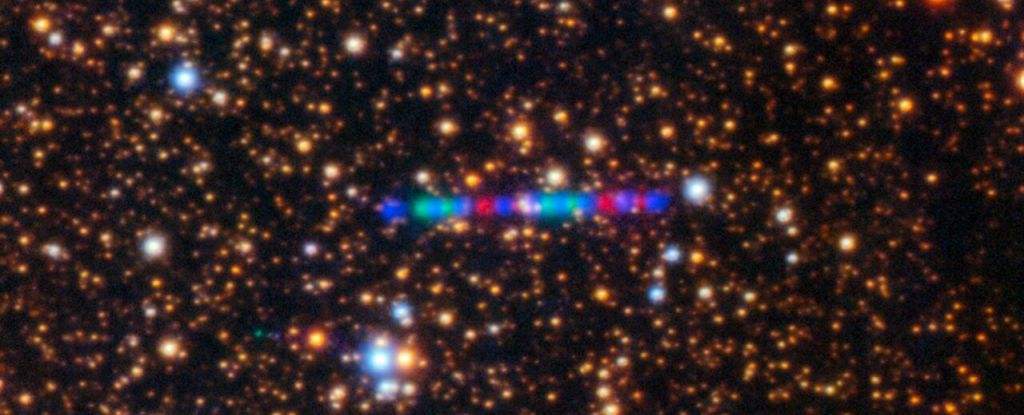
Astronomers have quickly gathered significant information about the interstellar comet 3I/ATLAS, detected on July 1, 2025. This discovery marks only the third known object to enter our Solar System from beyond its boundaries. As scientists delve into its characteristics and trajectory, they are uncovering intriguing details that highlight its uniqueness compared to previous interstellar visitors.
Trajectory and Speed
Initial observations reveal that 3I/ATLAS was first identified at a distance of 4.5 astronomical units from the Sun, which places it within the orbit of Jupiter. It is traveling at a speed of just under 60 kilometers (37 miles) per second, a velocity that will increase as it approaches the Sun. For comparison, the earlier interstellar comets 1I/’Oumuamua and 2I/Borisov traveled at 26 kilometers per second and 32 kilometers per second, respectively.
The closest approach of 3I/ATLAS to the Sun is projected for October 29, 2025, when it will reach approximately 1.36 astronomical units, inside the orbit of Mars. Its closest encounter with Earth is anticipated in December 2025, when it will be about 1.8 astronomical units away.
Origin and Age
The trajectory and speed of 3I/ATLAS suggest that it originates from the thick disk of the Milky Way, a region known for its older stellar population. This observation leads researchers to hypothesize that the comet itself is quite ancient. According to a separate analysis, its faster velocity compared to 1I/’Oumuamua and 2I/Borisov indicates that it may be older than these objects.
Current estimates place its age between 3 billion and 11 billion years, suggesting that it likely predates the formation of the Solar System, which is approximately 4.6 billion years old. Astrophysicist Chris Lintott from the University of Oxford remarked, “We think there’s a two-thirds chance this comet is older than the Solar System, and that it’s been drifting through interstellar space ever since.”
Physical Characteristics
Although detailed information about its appearance remains limited due to its small size and distance, early observations indicate that 3I/ATLAS measures about 10 kilometers across. This size makes it significantly larger than its predecessors, 1I/’Oumuamua and 2I/Borisov, which measured up to 400 meters and 975 meters, respectively.
Independent teams have analyzed the light spectrum reflected off the comet, suggesting it possesses a complex mix of grain sizes or a composition that diverges from typical Solar System comets. Recent images from the Gemini North telescope have captured the comet’s puffy coma, a halo of dust and gas surrounding it. As 3I/ATLAS approaches the Sun, astronomers expect increased activity, leading to cometary outgassing.
Darryl Seligman, an astronomer at Michigan State University, noted, “3I/ATLAS likely contains ices, especially below the surface, and those ices may start to activate as it nears the Sun. But until we detect specific gas emissions, like H2O, CO, or CO2, we can’t say for sure what kinds of ice or how much there is.”
Future Observations
The scientific community is keen to continue monitoring 3I/ATLAS as it presents a rare opportunity to explore previously inaccessible regions of the galaxy. Its larger size compared to previous interstellar visitors enhances its potential as an observation target. The implications of its presence suggest that interstellar objects may be more common than previously thought.
Looking ahead, excitement is building for the upcoming ESA/JAXA Comet Interceptor mission, scheduled for launch in 2029. This mission aims to study comets up close, further expanding our understanding of these fascinating celestial objects and their origins. As astronomers continue to observe and analyze 3I/ATLAS, the insights gained may reshape our knowledge of interstellar bodies and their role in the cosmos.







